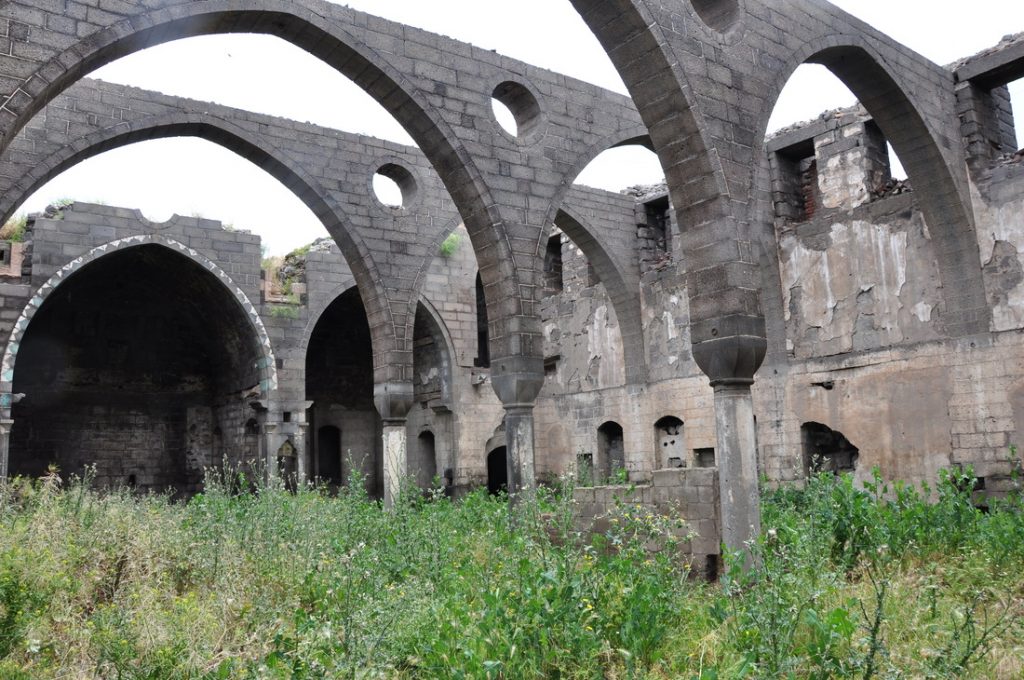Sources Close to the Surp Giragos Armenian Church Foundation Tell the Armenian Weekly that the News of the Scheduled Demolition is Not True
DIYARBAKIR, Turkey (A.W.)— Netherlands-based ANF News reported on June 4 that the historic Surp Sarkis Armenian Apostolic Church of Diyarbakir was slated for demolition, as a part of the state-sponsored project to demolish several buildings in the Alipaşa and Lalebey neighborhoods of Diyarbakır’s Sur district.
In late May, it was reported that bulldozers began demolishing the city’s Church Square (Kilise Meydanı) upon the order of Turkey’s Ministry of Environment and Urbanization. Reports also indicated that local police attacked citizens trying to block the bulldozers in protest.
Surp Sarkis Armenian Apostolic Church, which was built in the 16th century, became a main cathedral for the Armenian community, after the Ottoman confiscation of the largest Armenian Apostolic Church in the city—Saint Theodore (“Sourp Toros”)—and its conversion into a mosque (Kursunlu Cam).
Sources close to the Surp Giragos Armenian Church Foundation told the Armenian Weekly that the news of the scheduled demolition is not true. Armenian Revolutionary Federation (ARF) Eastern United States Central Committee chair George Aghjayan, whose primary area of focus is the demographics and geography of Western Armenia, said that he too hopes the news is false. “It is my hope that the reports are inaccurate of the anticipated demolition of the Surp Sarkis Armenian Apostolic Church. I was fortunate enough to visit the Church in 2013 and its cultural and historical significance cannot be overstated,” Aghjayan said. “If true, any planned demolition should be immediately stopped,” he added.
Armenian Weekly contributor and member of the Surp Giragos Church reconstruction project Raffi Bedrosyan told the Armenian Weekly that if true, the planned demolition is yet another example of the Turkish government’s plans to erase all traces of the Armenian identity from the area. “Surp Sarkis, which looks like how Surp Giragos did before its reconstruction, was the site chosen to commemorate the Armenian Genocide Centennial in 2015. Whatever is left of the abandoned and destroyed Church, may now be slated for total demolition by the Ankara government. If true, this is another opportunistic move by the government to wipe out remaining traces of Armenian identity, whenever and wherever possible,” Bedrosyan said.
Until 1915, Surp Sarkis was known to preserve the nail used in the crucifixion of Jesus Christ—a relic brought out in solemn procession several times each year. The Church was pillaged in May 1915—during the Armenian Genocide—and was operated as a warehouse for most of the 20th century. Most recently, it has been reported that the Church has been used as a refuge for homeless and the war-stricken locals.


